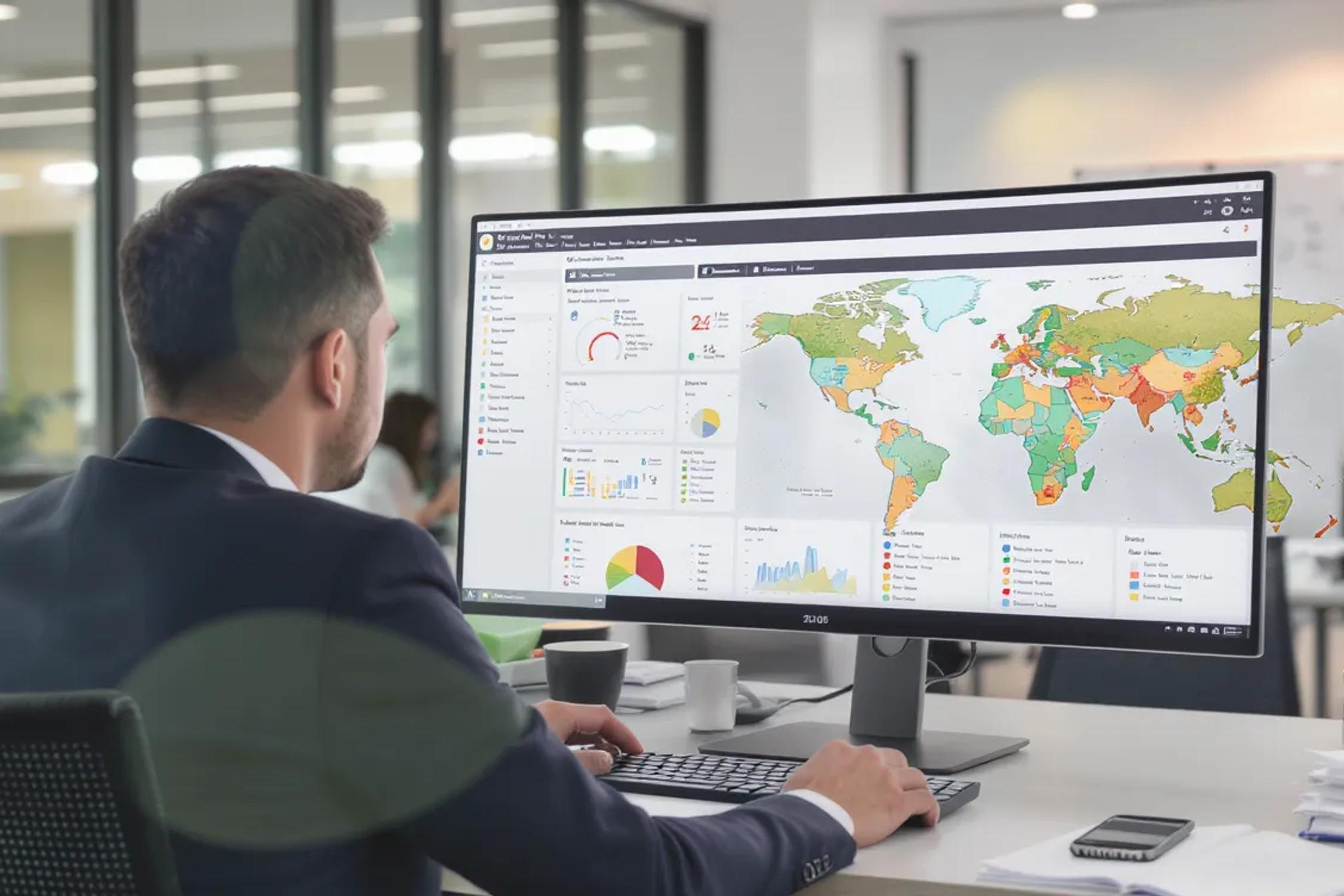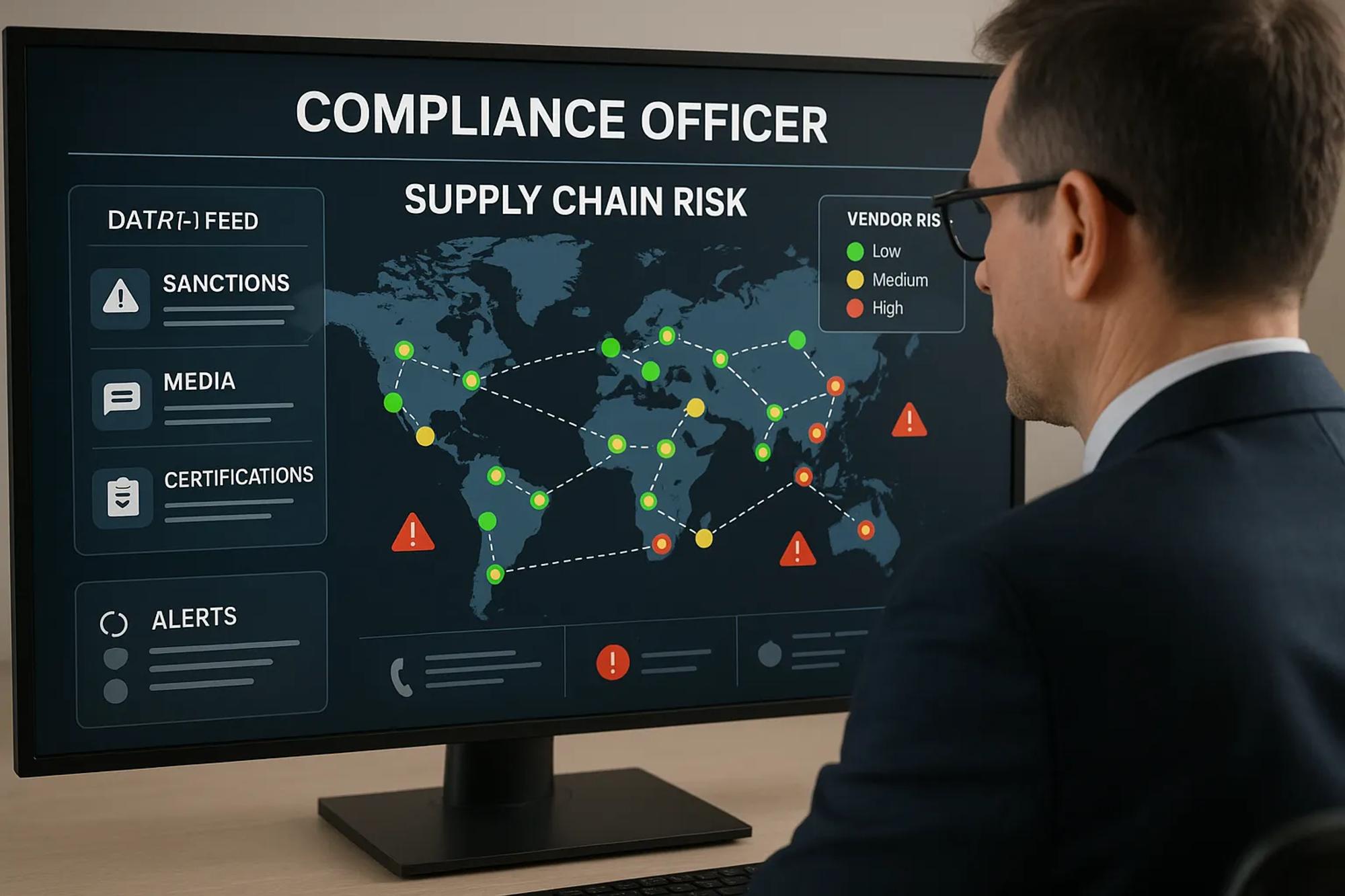Friday, November 7, 2025
From red flags to trust: vendor risk management


Imagine a large European company faces allegations that one of its subcontractors was involved in forced labor on a construction site in 2023. The fallout travels faster than the facts. Headlines spread across social media, shareholder calls pour in, and the company’s legal team scrambles to prove it had done its homework. Even if the accusations are later found to be exaggerated, the reputational dent can linger. Most compliance officers know that a single weak link in the value chain can undo years of careful governance—but how do you spot that weak link before the headlines break? The answer lies in disciplined, technology-enabled vendor risk management.
Why vendor risk now sits on the board agenda
Until a few years ago, vendor due diligence was treated as an operational checklist: collect a few certificates, store them in a drawer, and hope for the best. That complacency is no longer viable. A wave of global and local regulations has elevated third-party oversight from best practice to legal requirement:
Regulation | Scope of third-party obligations | Geographic reach |
|---|---|---|
Loi Sapin II (France) | Anti-corruption due diligence, risk mapping, internal controls | Applies to French companies and subsidiaries with ≥ 500 employees or €100 m revenue |
ISO 37001 | Anti-bribery management systems; expects continuous supplier monitoring | Voluntary, increasingly referenced in public tenders worldwide |
UNE 19603 | Antitrust compliance; demands vetting of distributors and agents | Spain, recognized by EU competition authorities |
UNE 19601 | Criminal compliance; requires controls over contractors that could expose the firm to criminal liability | Spain |
5th & 6th AMLD | Ongoing screening of counterparties against sanctions lists, PEPs, adverse media | European Union |
EU AI Act (draft) | Transparency and risk management for high-risk AI systems supplied by vendors | European Union |
Add to this the French devoir de vigilance law, the German Lieferkettengesetz, the Norwegian Transparency Act, and the EU CSDDD, and the message is clear: regulators expect companies to police their supply chains—failure is not just an internal lapse, it is a breach of public trust.
A storyline of risk: from onboarding to renewal
Imagine you are the compliance officer of an intermediate-sized renewable-energy firm about to deploy solar panels across southern Europe. A Spanish installer offers an unbeatable price and an impressive client list. You want to move fast, but your instincts demand proof:
- Onboarding screening
- You send the installer a structured questionnaire covering governance, anti-corruption, labor rights, and data privacy.
- An automated engine cross-checks directors’ names against global sanctions lists and politically exposed persons (PEP) databases.
- Adverse-media crawlers surface three local news stories hinting at possible wage-dumping on a previous project.
- Risk classification
- The installer scores “medium-high” because of labor issues in a sector prone to subcontracting abuses.
- Under your company policy, that rating triggers enhanced due diligence.
- Red-flag investigation
- You commission a local audit of the installer’s payroll practices.
- The audit confirms underpayment of temporary workers in 2021—a red flag.
- Mitigation plan
- The installer signs your third-party code of conduct and commits to backpay affected workers.
- A contractual clause allows immediate suspension if new violations arise.
- Continuous monitoring
- Automated data feeds re-scan sanctions lists weekly and scrape regional news sites daily. Any negative hit triggers an alert in the compliance dashboard.
- Renewal decision
- Twelve months later, no new incidents are detected, the installer moves to a “low-medium” risk tier, and the relationship continues.
The storyline above is not fiction; it mirrors the controlled workflow leading companies now follow to convert red flags into verified trust.
From red flags to trust: the four pillars of effective vendor risk management
1 Structured data gathering
Unstructured emails are the enemy of audit trails. A best-practice program relies on:
- Dynamic questionnaires tailored to the vendor’s sector, geography, and contract value.
- Evidence upload (certificates, policy PDFs, ISO attestations) linked to each question.
- API connections to sanctions, PEP, and watch-list databases to avoid manual copy-paste.
2 Risk scoring engines
A clear, rules-based scoring model ensures fairness and speed. Typical inputs include:
- Inherent risk factors (industry, country, service type).
- Control factors (existence of ISO 37001, UNE 19601 certifications, prior compliance breaches).
- Continuous signals (media sentiment, litigation records, whistleblower tips).
Weighted algorithms convert these inputs into risk tiers that automatically prescribe the next action—standard vs. enhanced due diligence—as required by Loi Sapin II or AML regulations.
3 Playbooks for red-flag resolution
Seeing a red flag is inevitable; what matters is the documented response. A robust playbook might offer four graduated options:
- Corrective action plan: Suitable when the supplier shows willingness and capability to remediate, e.g., implement anti-corruption training within 90 days.
- Contractual safeguards: Insertion of suspension, audit, or claw-back clauses. Such clauses may prevent exposure.
- Conditional onboarding: Proceed with small purchase orders while deeper investigation continues.
- No-go decision: Exit or refuse the relationship when violations are severe or systemic.
Choosing the right lever depends on risk severity, replacement cost, and regulatory pressure. Documenting the rationale is essential for prosecutors and regulators who may inspect files years later.
4 Continuous monitoring, not annual déjà vu
Annual recertification once satisfied auditors, but real-time news cycles expose wrongdoing within hours. Modern programs use:
- Daily sanctions-list deltas from OFAC, EU, UN, and local authorities.
- AI-powered adverse-media mining that understands sentiment and context (distinguishing “alleged” from “convicted”).
- Task automation that reminds to update suppliers questionnaires regularly
With automation, compliance teams act on needle-moving alerts instead of drowning in PDFs.

Where AI fits—and where humans remain irreplaceable
Platforms using AI can accelerate each pillar without replacing professional judgment:
- Automated data collection pulls sanctions, corporate registry, and media data into a single profile, cutting manual lookup time by up to 70 percent.
- Compliance workflow automation routes high-risk cases to legal or finance approvers, maintaining segregation of duties demanded by ISO 37001.
- Automation of questionnaires: send and track suppliers questionnaire, review and analyse replies.
Human experts still own tasks that algorithms cannot answer with certainty:
- Deciding whether an adverse-media hit signals systemic misconduct or isolated error.
- Negotiating contract language that balances legal protection with commercial feasibility.
- Coaching suppliers in emerging markets where compliance maturity is evolving.
The partnership of AI speed and human nuance transforms vendor risk management from a bottleneck into a trust-building advantage.
A practical checklist for your next board briefing
- Map all third-party categories (suppliers, agents, joint-ventures) and assign inherent risk scores.
- Align your policy with at least one recognized framework (ISO 37001, UNE 19601) and reference it in contracts.
- Implement an automated questionnaire plus sanctions/news screening for every onboarding.
- Define red-flag playbooks with pre-approved legal clauses for suspension or termination.
- Automate continuous monitoring with alert thresholds linked to workflow escalation.
- Report quarterly to the board using KPIs that tie risk reduction to operational speed.

Turning red flags into competitive advantage
Regulators are not the only audience; customers and investors increasingly ask hard questions about whom you buy from. A transparent, data-driven vendor risk program signals that your organization plays by the rules and expects partners to do the same. Instead of viewing red flags as roadblocks, treat them as opportunities to demonstrate diligence and to help trusted suppliers improve.